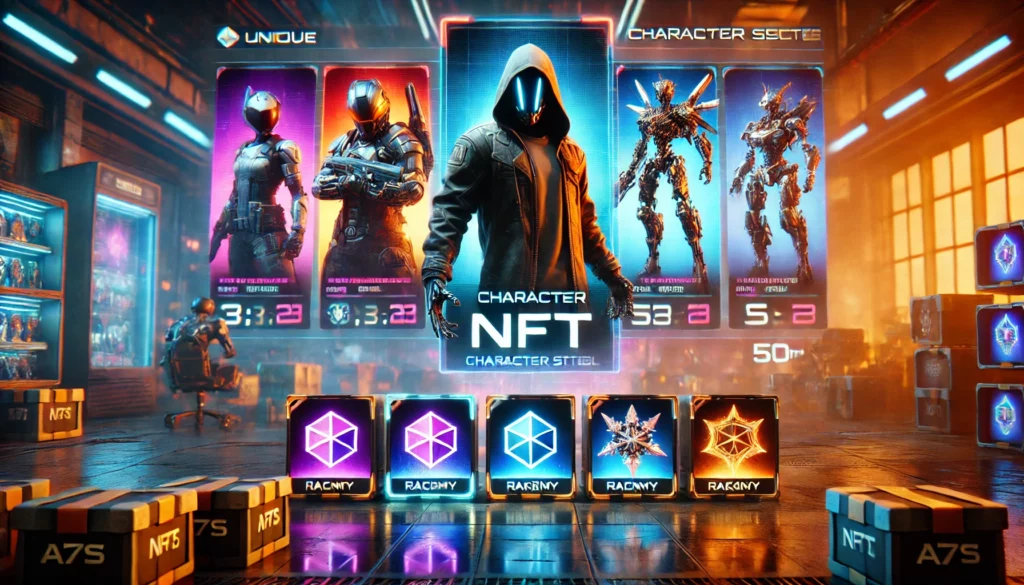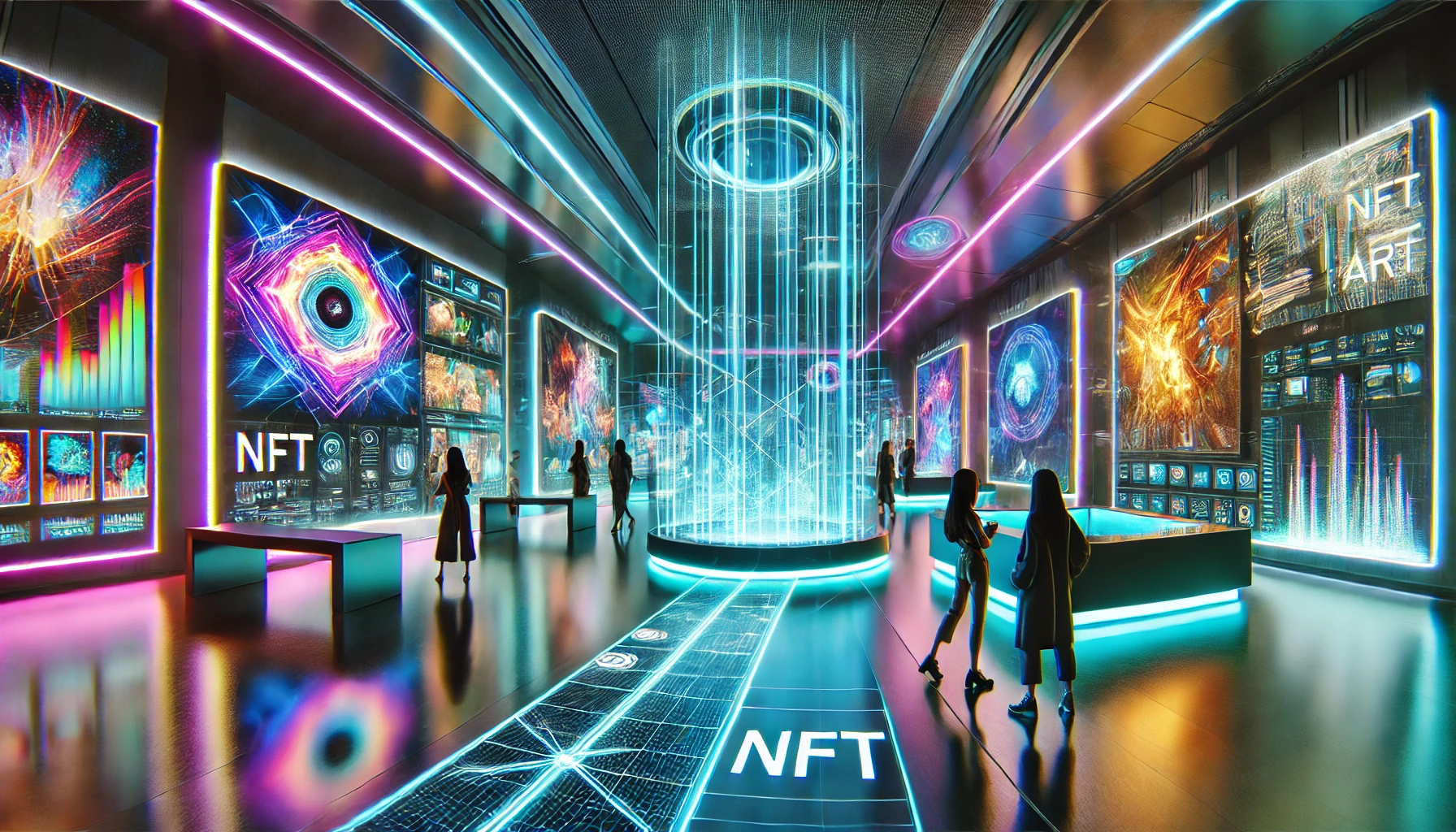NFTs explained: Understanding non-fungible tokens and their use cases
The rise of digital ownership
Imagine owning a unique piece of digital art, a collectible, or a rare in-game item that no one else can claim as theirs. This is the world of non-fungible tokens (NFTs)—a technology that enables ownership and authenticity in the digital space. While NFTs first gained mainstream attention in art and gaming, their potential applications are expanding rapidly, promising to transform industries from entertainment to real estate.
In this guide, we’ll break down what NFTs are, how they work, and dive into some of their most exciting use cases. By the end, you’ll clearly understand why NFTs are becoming a vital part of the digital economy.
What are NFTs? A simple explanation
NFTs, or non-fungible tokens, are digital assets that represent ownership of unique items or content. Unlike cryptocurrencies like Bitcoin or Ethereum, which are fungible (each coin is the same as another), NFTs are unique and cannot be exchanged one-for-one with other NFTs.
NFTs are built on blockchain technology, typically on the Ethereum blockchain, which ensures each NFT is traceable and secure. Each token contains metadata that distinguishes it from others, allowing it to act as proof of ownership and authenticity for digital assets like artwork, music, videos, and even virtual real estate.
Once data is recorded in a blockchain, altering this data is nearly impossible without modifying every subsequent block. This makes blockchain technology secure and trustworthy.
Practical tip: Think of an NFT as a digital certificate of authenticity—each one is unique and can represent ownership of both digital and physical items.
Stat: In 2021, the NFT market grew over 21,000%, reaching a value of $17 billion.
Simplify how
Subscribe to stay ahead in crypto with tips, guides, and the latest blockchain insights delivered to your inbox.
How do NFTs work? The basics of Blockchain and digital ownership
NFTs function on blockchain networks like Ethereum or Solana, which provide a secure and decentralized platform for creating, buying, and selling these tokens. Here’s a basic breakdown of how NFTs work:
- Minting: An NFT is created, or “minted,” on a blockchain. This process stores the NFT’s unique data, making it immutable and traceable.
- Ownership: The owner of an NFT holds a digital certificate that verifies their ownership, which is recorded on the blockchain.
- Transferability: NFTs can be bought, sold, or traded. Each transaction is recorded on the blockchain, ensuring a transparent history of ownership.
- Smart Contracts: Many NFTs use smart contracts, which can automate certain actions, such as transferring royalties to creators every time the NFT is resold.
This structure enables NFTs to be unique, verifiable, and easily transferable. Making them ideal for representing digital ownership.
Quote: “An NFT is a receipt that says, ‘This unique item is yours, and everyone can verify that.’” – Gary Vaynerchuk, Entrepreneur and NFT advocate.
Top use cases for NFTs
While NFTs first became popular in the art and collectibles markets, they have found applications across various industries. Here are some of the most impactful use cases:
- NFTs in digital art and collectibles: NFTs have transformed digital art, allowing artists to sell unique digital creations with proof of authenticity and ownership. This has led to a new wave of digital artists monetizing their work and even auctioning it for significant sums.
- Example: In 2021, digital artist Beeple sold his NFT artwork “Everydays: The First 5000 Days” for $69 million, marking a landmark sale in digital art.
- Why it matters: NFTs enable digital artists to monetize their work directly and retain value over time, even as the piece is resold.
- Quick tip: If you’re a digital artist, consider minting your work as NFTs to retain ownership rights and even earn royalties from future sales.
- NFTs in gaming and virtual assets: NFTs are also shaking up the gaming world by creating true ownership of in-game items, which players can buy, sell, or trade outside of the game.
- Example: Games like Axie Infinity and Decentraland allow players to own and trade assets (like characters, land, or items) as NFTs. Players can earn actual income by selling these assets in secondary markets.
- Why it matters: NFTs grant gamers real-world value for their time and investments, and developers benefit by fostering more loyal player communities.
- Stat: The global market for NFTs in gaming is projected to grow to $2 billion by 2025 as more players invest in virtual assets.
- NFTs in music and entertainment: NFTs provide musicians and creators with new ways to monetize their work and connect with fans, allowing artists to issue limited digital albums, special content, or exclusive tickets as NFTs.
- Example: Kings of Leon made history as the first band to release an album as an NFT, offering fans exclusive content and perks with their purchases.
- Why it matters: NFTs empower artists by cutting out intermediaries, giving them a higher revenue share and more control over their content.
- Quick tip: NFTs can also function as fan memberships, granting access to exclusive content, events, or merchandise. Making them a powerful tool for artists looking to strengthen their fan base.
- NFTs in real estate and virtual land: NFTs are making waves in real estate by allowing digital ownership of virtual real estate within metaverse platforms like Decentraland and The Sandbox.
- Example: Virtual plots of land are bought, sold, and developed in these virtual worlds, where people can build experiences, host events, or sell items.
- Why it matters: Virtual land ownership is creating a new market where users can invest in digital properties, earn passive income, or build unique experiences within these virtual spaces.
- Stat: The virtual real estate market reached over $500 million in 2021, with investments expected to rise in the coming years.
- NFTs in ticketing and event access: NFTs are being adopted in ticketing for live events, offering a secure, tamper-proof way to issue and transfer event tickets while preventing counterfeit tickets.
- Example: Several music festivals and sporting events are exploring NFT-based ticketing to ensure authenticity and offer perks for attendees.
- Why it matters: NFT-based tickets reduce fraud and offer added features like collectibles, loyalty rewards, and exclusive content for ticket holders.
- Quote: “NFTs in ticketing could be the end of counterfeit tickets and add real value to event experiences.” — Mark Cuban, Entrepreneur and Investor.

Challenges and criticisms of NFTs
While NFTs bring new possibilities, they also face several challenges:
- Environmental concerns: Many NFTs are minted on energy-intensive blockchains like Ethereum, raising concerns about carbon footprints.
- Market volatility: NFTs can be highly speculative, and prices fluctuate widely, making it a risky investment.
- Copyright issues: NFT ownership doesn’t always grant copyright, which can create confusion around ownership rights and usage.
Practical tip: Before buying an NFT, research its blockchain’s environmental impact and understand what rights you’re actually purchasing.
The future of NFTs: A new digital economy
NFTs are more than a trend—they’re redefining ownership and reshaping industries from art to real estate. As blockchain technology evolves, NFTs are expected to offer even more applications, such as identity verification, digital certification, and licensing. Whether you’re an artist, gamer, or investor, NFTs present exciting opportunities to engage in a new digital economy.
Conclusion: Exploring the possibilities of NFTs
NFTs are helping create a world where digital ownership holds real value, and individuals can control and monetize their digital assets. By understanding what NFTs are and their potential applications, you’ll be ready to explore this transformative technology as it continues to shape our digital future.
FAQs
Here are answers to some frequently asked questions.
NFT stands for Non-Fungible Token, which refers to a unique digital asset that represents ownership of specific items or content, like digital art, music, or in-game assets. Each NFT is one-of-a-kind and cannot be exchanged for an identical item, unlike cryptocurrencies or traditional money.
While both NFTs and cryptocurrencies are built on blockchain technology, they serve different purposes. Cryptocurrencies (like Bitcoin or Ethereum) are fungible and can be exchanged equally with each other. NFTs, on the other hand, are non-fungible, meaning each one is unique and cannot be exchanged on a one-to-one basis with another NFT.
The value of an NFT is determined by factors such as its rarity, creator, popularity, and demand in the market. Since each NFT is unique, the price is often driven by what buyers are willing to pay for exclusive ownership, particularly in fields like art and gaming.
NFTs can be highly speculative, with values fluctuating significantly. While some NFTs have sold for millions, others may lose value over time. Research and careful consideration are essential before investing in NFTs, as their worth is largely market-driven and can be volatile.
Yes! Anyone can create (or “mint”) their own NFT on blockchain platforms like Ethereum or Solana. You’ll need to upload your digital content, set up a digital wallet, and pay a small fee for the minting process. Once created, your NFT can be listed on marketplaces like OpenSea or Rarible for others to buy or trade.
